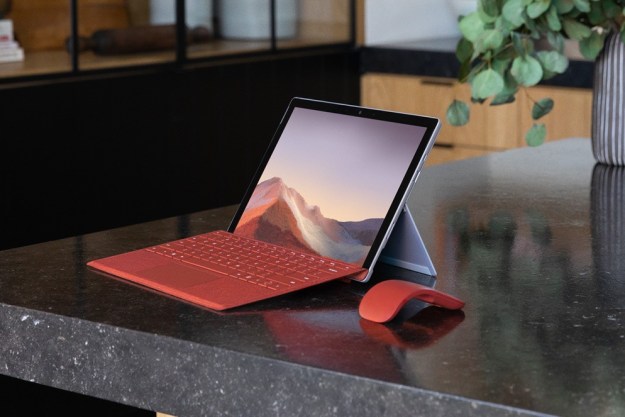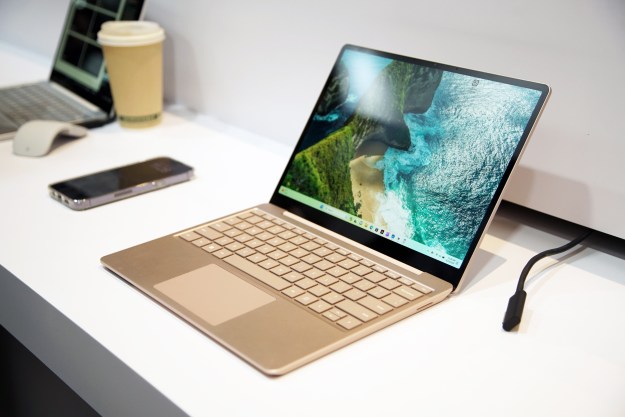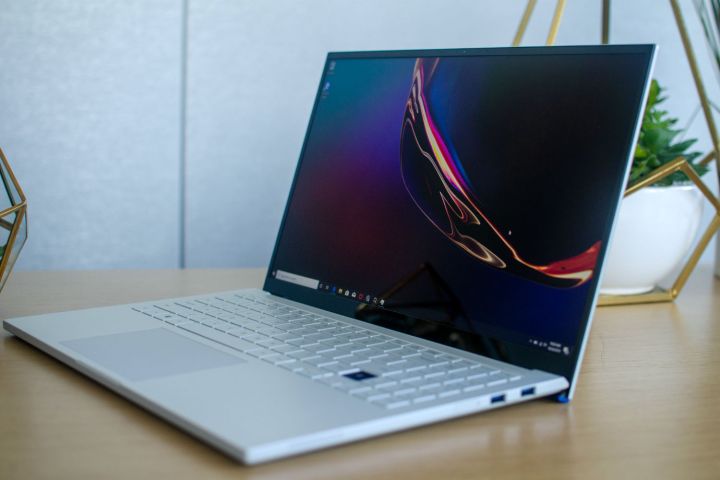
The Galaxy Book Flex brings QLED to laptops, at a high price. But Samsung didn’t want to stop there. Samsung wants to bring QLED screens to more affordable devices as well. With the new Galaxy Book Ion, Samsung offers almost everything you’ll find on the flagship Samsung Galaxy Book Flex, but in a less expensive, more traditional laptop.
A shared heritage
When I first walked up to try out the new Galaxy Book Ion, I right away noticed it’s stunning near edge-to-edge QLED display. Just like the Galaxy Book Flex, the colors of the default wallpaper on the laptop were brighter and more vibrant compared to the LED display on the older Notebook 9 sitting right next to it. The Ion even has the same “Outdoor mode” as the Flex, brightening its display up to 600 nits.
Both the 13-inch and 15-inch models come with this new screen, and the colors look just as brilliant on the Ion as it does on the Flex.
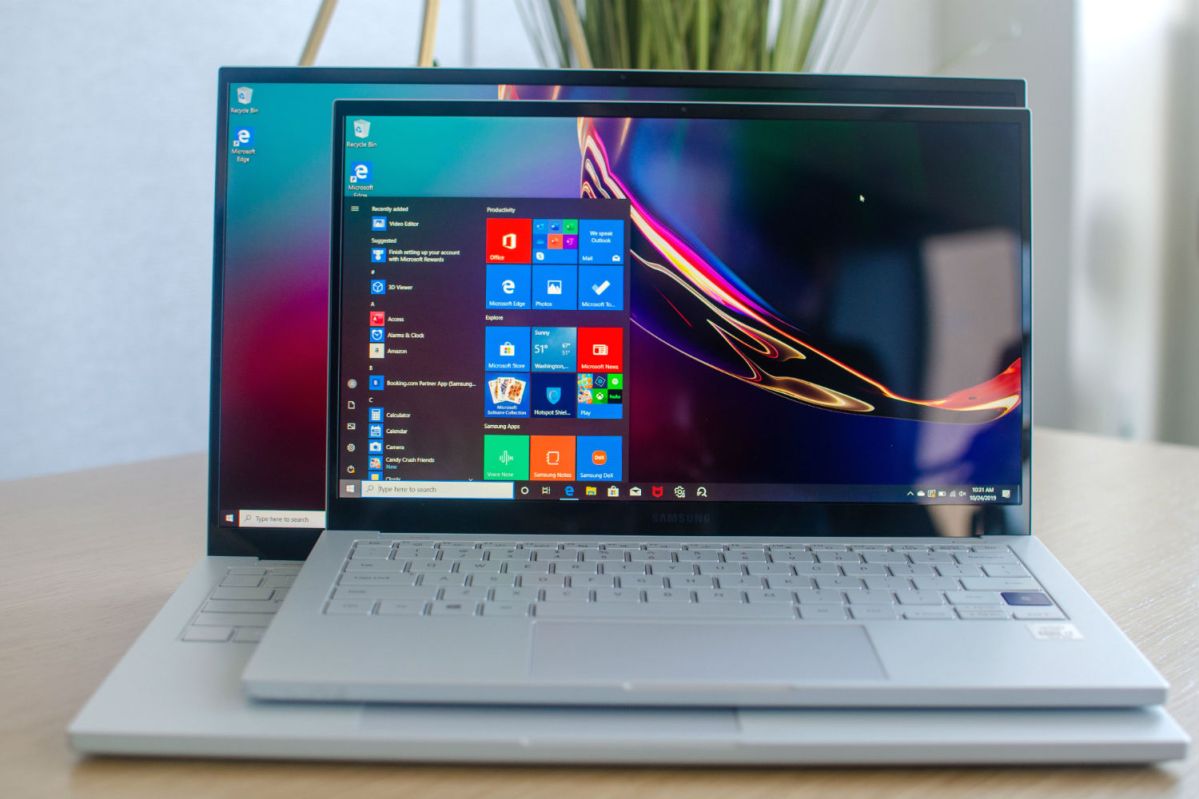
To my surprise, Samsung claims the same 20 hours of battery life and “Power Share” feature from the Flex was also here, and I happily tossed my phone on the large touchpad to have it wirelessly charge. With Samsung mentioning that this is a laptop that won’t break the bank, I was quite glad to see two of the flagship features on the cheaper alternative.
Unfortunately, what the Galaxy Book Ion lacks is a touch screen. That also means it isn’t compatible with the S Pen like the Flex. Considering that 13-inch laptops like the Surface Laptop 3 or Pixelbook Go all feature touch screens, that is a bit of a letdown. But, since this is the more affordable option, it is a sacrifice worth it for most.
Can a laptop be too light?
But of the more important aspects of the new Galaxy Book Ion is its lightweight design. Engineered out of magnesium, the 13-inch models come in 2.1 pounds and the 15-inch models up to 2.7 pounds. The thickness also comes in at less than half an inch on the 13-inch model and 15-inch model. Compared to the aluminum used on the Galaxy Book Flex, Samsung promises this makes the device quite portable, especially for the mobile worker.
The color of the device too is quite different from the Galaxy Book Flex. While the Flex sports bold blue, the Ion is outfitted in a more traditional “Aura Silver” color. It’s a more business-friendly color that doesn’t stand out nearly as much.
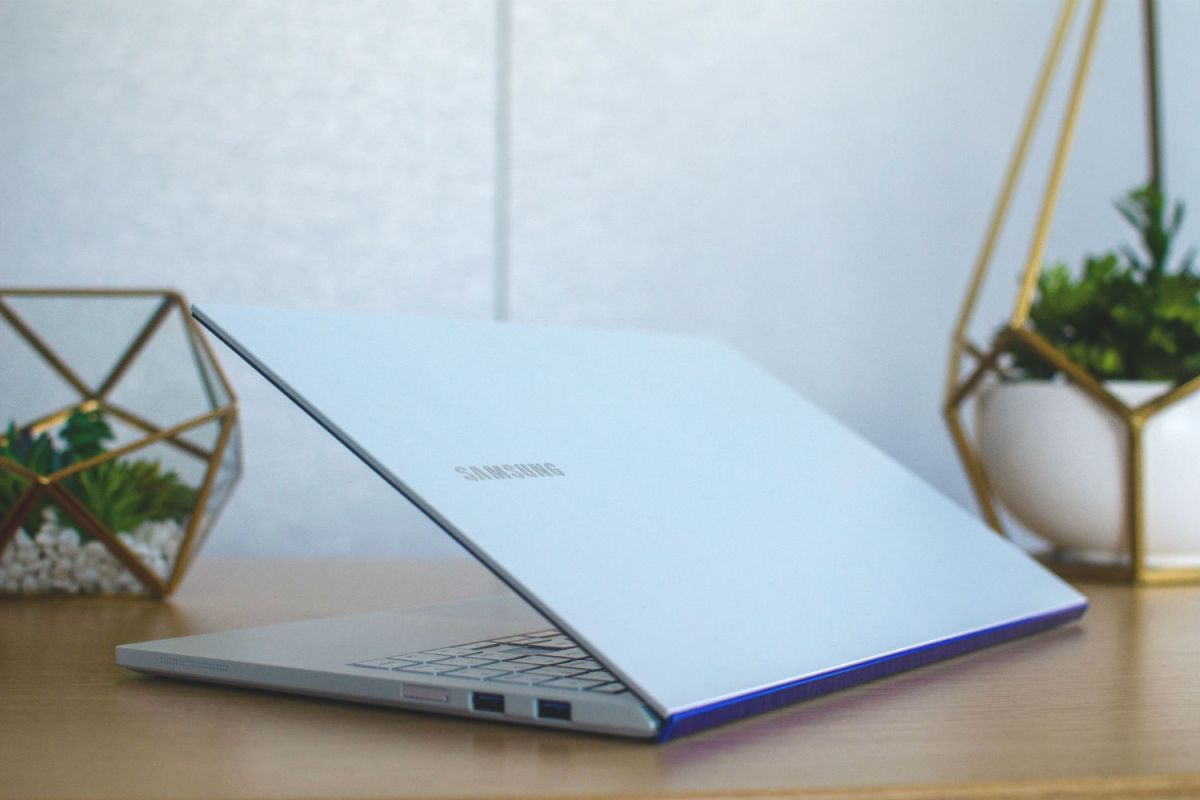
I was curious as to if this lightweight design meant for any sacrifices on build quality. It would appear as though the device is too light to be true. When pressing my hands on the keyboard deck, there was a small flex. It definitely felt flimsy compared to the Flex, which has been a problem for Samsung laptops in the past.
But it’s not all a loss. The chassis does offer a solid mix of ports and connectivity despite it being quite thin. Samsung has thrown in a Thunderbolt 3 port, two USB-A 3.0 ports, HDMI, and a micro-SD card slot. Compared to the all USB-C connectivity on the Galaxy Book Flex, this means you’ll be able to leave your dongles at home.
A very comfortable keyboard
Another design element that makes the Galaxy Book Ion unique is its keyboard. This is something that’s shown up in Asus laptops like the ZenBook 13. When the lid of the laptop is opened, a book-style hinge elevates the keyboard at a small angle. This makes it easier to type on as my hands didn’t need to rest down to the keyboard. Instead, the keyboard came up to reach my fingers, taking the pressure off my wrists.
I repeatedly opened and closed the lid, watching the keyboard elevate up with a satisfying lift. The keyboard itself was quite welcoming too. My fingers easily jammed between the perfectly square and soft-feeling keys. There’s a nice bounce-back between presses, and I achieved a 100% accuracy and scored roughly 63 words per minute in Bing’s typing test.

I also must mention the presence of a fingerprint reader on the Galaxy Book Ion keyboard. Though we don’t know the price of the Ion, it’s great to see a fingerprint scanner included in what’s being billed as a cheaper alternative. The placement of the fingerprint scanner, which cuts the right-side Shift key in half, does throw things off a bit though. Samsung wanted it to stand out, but it’s location might make it prone to accidental presses.
The 15-inch model includes a number pad to the right with an off-center touchpad, while the 13-inch has a more familiar layout.
Comet Lake, instead of Ice Lake
Finally, there’s the need to talk about the CPUs on the inside. While the Galaxy Book Flex comes with options for Ice Lake processors, Samsung has opted for Comet Lake CPUs on both the 15-inch and 13-inch Galaxy Book Ion.
In what could be a cost-cutting effort, this takes the Ion in the opposite performance direction of the Flex. While there are options in the 15-inch model for an Nvidia GTX MX250 discrete graphics, the Ion won’t be able to take advance of the improved Iris Plus integrated graphics found in Intel Ice Lake CPUs.

Comet Lake does have one advantage over Ice Lake, though. The top-end Core i7 features a six-core option, which would significantly increase performance in tasks like video rendering and editing. We’ve seen that processor show up in compact laptops like the Dell XPS 13. Unfortunately, Samsung has decided not to include this as an option for the Ion.
Samsung has included an extra slot for additional memory and storage, meaning you can boost performance all on your own.
But that’s not to say that the performance on the Ion is a failure. With the quad-core Intel Core i7-10510U CPU inside my demo unit, I was still able to enjoy web browsing and other productivity tasks. Combined with up to 16GB RAM, the most common every-day computing tasks will work fine. It’s just not laptop meant for content creation or other highly intensive tasks.
On the 15-inch version specifically, Samsung has included an extra slot for additional memory and storage. This means that you can boost your PC’s performance without adding any bulk. That’s great, especially in an era where many laptops have everything soldered down.
A nice alternative to the Galaxy Book Flex
Samsung hasn’t yet given pricing or release date on the new Galaxy Book Ion, but it mentioned to Digital Trends that the device is an “ultra-portable PC that won’t break the bank.”
With the exact specifics unknown, the Ion could shape up to be a quality alternative to the Galaxy Book Flex. The stunning QLED display, as well as the Wireless Powershare features, are both still here, with the addition of a comfortable keyboard.
Editors' Recommendations
- The case for buying the M2 MacBook Air over the M3 model
- Why one of my favorite laptops still struggles against the MacBook Pro
- This one surprising laptop could actually challenge the MacBook Pro
- I’m a laptop reviewer. Here’s why I still use a laptop from 2021
- This is one of my favorite Windows laptops. But can it beat the MacBook Air?

